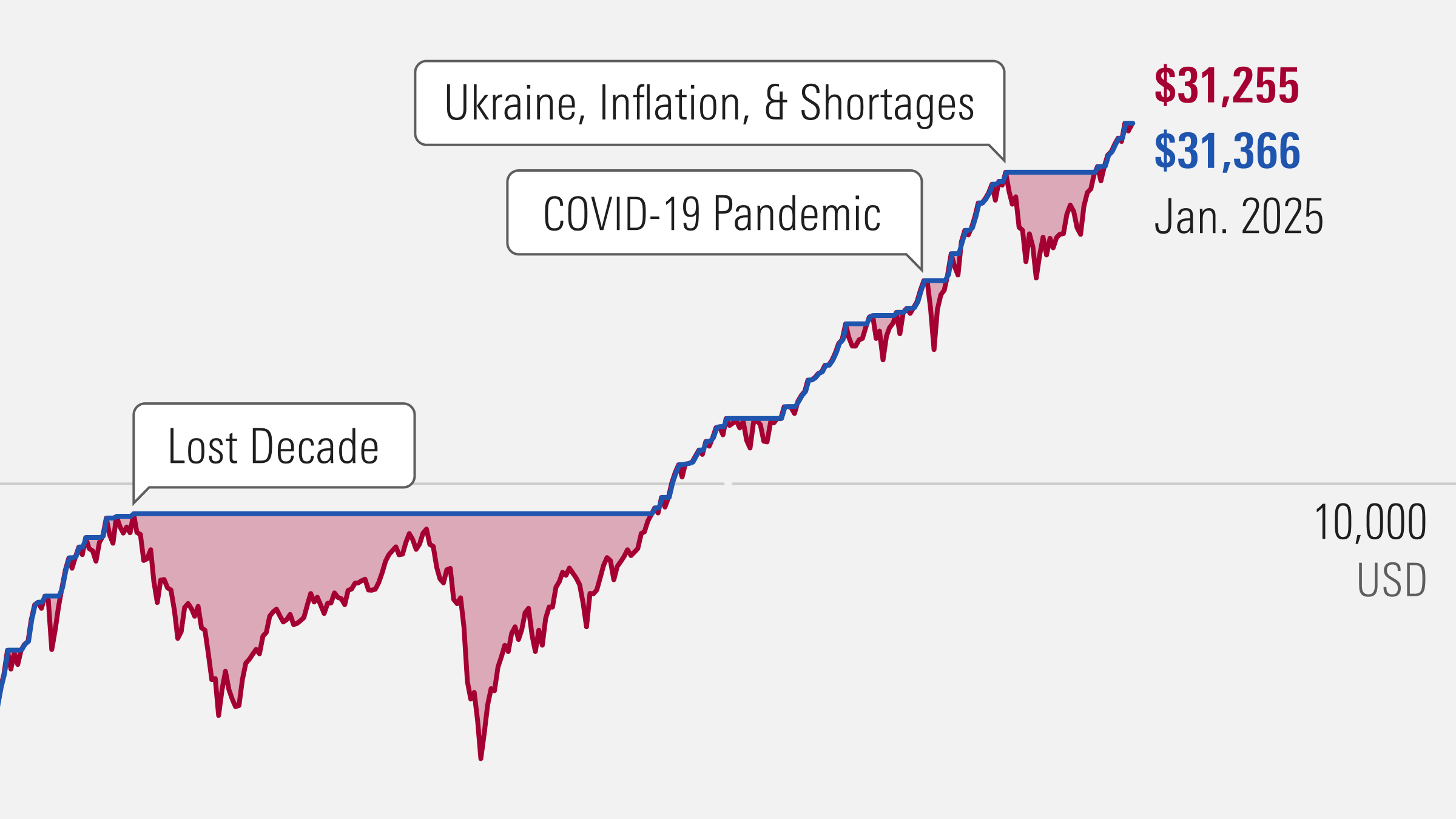
There's a lot to like about index investing.
Market-cap-weighted index funds harness the market's collective wisdom, they tend to enjoy a sizable cost advantage over their active counterparts, and they avoid key-person risk.
They've put downward pressure on fees across the entire asset-management industry, which has also helped investors in actively managed funds.
But not everyone is a fan.
Here's a closer look at some arguments against index funds.
Most aren't compelling.
1) The market isn't perfectly efficient, which creates opportunities for active investors.
Market efficiency is the idea that prices reflect all publicly available information. If it's true, fundamental research shouldn't help active managers--after adjusting for risk--beat the market. Clearly, the market doesn't always get prices right. But that doesn't mean the market is easy to beat. Indeed, most active managers don't.
The market-efficiency argument says more about the risk of manager selection than it does about the case for index investing. In aggregate, active investors hold the same portfolio as passive investors, as broad, market-cap-weighted funds just replicate the composition of the market. So, their performance should be similar gross of fees. But because passive funds tend to charge less, they should do better on average. That's true regardless of market efficiency. If market inefficiency helps some investors, it hurts others. Paradoxically, as market efficiency declines, the case for index investing becomes stronger for uninformed investors because the risk of manager selection increases. There's a wider range of potential returns, both good and bad.
Even if a lack of market efficiency isn't necessarily bad for index investors, it could result in less-efficient capital allocation for the economy and create opportunities for skilled active investors to exploit. So, it still matters.
Yet it is tough to identify mispriced securities because competition among investors is fierce and they can all access the same information, with sufficient resources. Even when an active investor does correctly identify such securities, there's no risk-free way to benefit from mispricing. Stocks that look cheap can always become cheaper before they become fully valued. Even if the manager is ultimately right, investors may lose patience and pull their money from the fund before prices converge to fair value, forcing the manager to sell out prematurely.
2) As indexing becomes more popular, there is a risk that the market could become less efficient.
This argument suggests that index investing itself makes the market less efficient. At first blush, it seems plausible. As more investors shift from active to passive funds, there is a decline in resources dedicated to determining what each security is worth, which could lead to greater and more common deviations from fair value.
I once asked Professor Eugene Fama (who later won a Nobel Prize for his work on asset prices) whether the market would become less efficient as more active investors dropped out. His answer was that it depends on who drops out. If less-skilled investors and managers quit active management, it would leave a smaller pool of more-skilled investors who should price securities more efficiently. But because markets work best when there is a lot of competition, there could be a tipping point at which indexing becomes too large--though we're probably a long way from it.
Index equity funds currently account for 48 per cent of assets invested in U.S.-listed mutual funds and exchange-traded funds, but that figure overstates passive funds' impact on the market. Price discovery happens when shares change hands. Broad, market-cap-weighted funds tend to have much lower turnover than their actively managed counterparts, so their share of trading volume is considerably lower than their share of assets. In a recent study, Vanguard estimated that stock index funds account for less than 5 per cent of trading volume on U.S. exchanges.
3) Passive investing exacerbates, and suffers from, market dislocations by allocating more money to areas of the market as they become more overvalued.
Given their low share of total trade volume, it's unlikely that broad, market-cap-weighted index funds significantly magnify mispricing in the market. However, it is true that they tend to increase their exposure to areas of the market as their prices increase relative to others. Stocks in these market segments may have lower expected returns than cheaper stocks. Market capitalization is just price times number of shares outstanding. If a stock's price increases faster than average, it tends to become a bigger part of the index, which conflicts with traditional value investing. I think this is a fair criticism of passive investing.
There are clear examples where market-cap-weighting led to some large weightings in areas of the market that had been hot but subsequently underperformed. In December 1999, technology stocks represented 27 per cent of the S&P 500, up from 12 per cent three years earlier, just in time for the tech crash. Similarly, after a strong run in the 1980s, Japanese stocks grew to just over 60 per cent of the MSCI EAFE Index by 1989. They then lagged over the next two decades.
That said, such examples where the market widely misses the mark are rare. Most stocks that trade at high valuations do so for good reason, so it's often difficult to spot mispricing in real time. However, investors who are concerned about the market's tendency to load up on expensive securities might consider a fundamentally weighted index fund.
4) Passive funds own all the bad stocks.
This premise is true, but the implication that it makes passive investing a bad strategy is not. Think about the payoff structure for stocks. The most they can ever lose is 100 per cent, but their upside is unlimited, so a few big winners can make up for the market's many losers. Passive funds own them all. Those who attempt to avoid the bad stocks risk missing out on the big winners, which have historically accounted for the lion's share of the market's long-run returns.
5) Passive funds don't offer any downside protection.
This is also true, but it doesn't diminish the case for index investing. Most active managers haven't offered much better downside protection than their respective Morningstar Category indexes over the trailing 15 years through July 2019. While some active managers offer slightly better downside protection than their benchmarks, it's often partially because of the cash balances they keep on hand to meet redemptions. But rather than paying an active manager to hold cash, investors can do that themselves and just invest a little less in an index fund. A minimum-volatility fund could also provide some downside protection.
6) Forced index trades may create high transaction costs that can hurt performance.
This is a valid concern. When securities are added to or removed from an index, it forces managers who track the index to buy or sell those securities, regardless of price. Those concentrated trades can push prices away from the managers, hurting the performance of the index. In fact, much of the price impact happens before the index changes go into effect, as index arbitragers buy securities scheduled to be added to the index, in anticipation of index demand, and sell securities slated for removal.
These hidden costs tend to be bigger for less-liquid securities, like small-cap stocks, than for large-cap stocks, but they still matter there, too. It seems they should also increase with the amount of money tied to an index, but it appears these costs peaked around two decades ago and have declined since, while index investing has continued to grow. Perhaps the market is getting better at anticipating these changes before they're announced, but it's hard to say.
However, investors can largely avoid these costs by sticking to total market index funds. Total market indexes include everything, so if a stock's price gets bid up in anticipation of it joining a narrower index, like the S&P 500, they benefit. Similarly, if forced selling pressure temporarily depresses a stock's price after it's removed from an index, a total market index will continue to hold it and capture the rebound.
7) The growth of index investing can reduce the strength of corporate oversight and lead to less competition.
This argument isn't very persuasive. The idea is that if asset managers own all companies in an industry, they want them all to do well and won't push individual companies to aggressively compete to take market share away from others. However, there are a few reasons to believe that index ownership wouldn't necessarily lead to less competition.
First, corporate managers are given incentives to promote their own firms' best interest. Their compensation is usually closely tied to their company's stock performance and meeting growth and profitability targets.
Second, it's often not in a firm's individual best interest to increase its competitive behavior. For example, if General Motors (GM) were to cut the price on its Chevrolet Silverado pickup to gain market share from Ford (F), it knows that Ford is likely to follow suit, and both will be worse off.
Index managers don't focus on competitive strategy or pricing in their engagements with their portfolio companies. Rather, they focus on corporate governance, making sure managers' interests are aligned with investors' and that each firm is appropriately managing risks. Even if index managers wanted to influence corporate strategy, it isn't necessarily in their interest to maximize the profits of a specific industry because they own firms in all industries, and higher profits in one may equate to lower profits in another.
Passive investing isn't so bad
While passive investing isn't perfect, it is not a bad idea to let the market work for you. The competition for market-beating performance is a zero-sum game, where the benefits largely accrue to the firms charging the fees. If you don't work on Wall Street, the rise of passive investing isn't something to fear.





















